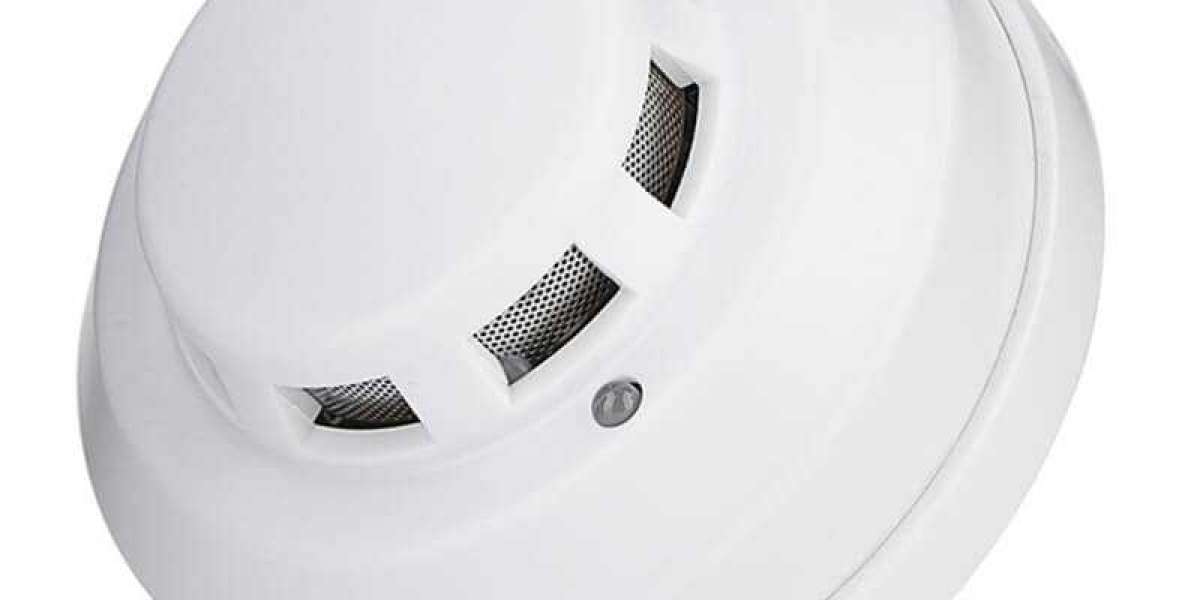Introduction
A smoke and carbon monoxide alarm manufacturing plant makes devices that detect smoke and CO in homes and businesses. These plants use advanced technology and strict safety standards to create reliable alarms. These alarms notify people about fire hazards and dangerous CO levels. The manufacturing process starts with sourcing high-quality materials like sensors, circuit boards, and housing parts. Workers then assemble these into finished products. Quality control checks ensure each alarm meets regulations and works well in emergencies. With growing awareness of safety risks, these plants are vital for improving public safety and preventing accidents.
The smoke and carbon monoxide alarm manufacturing industry are growing quickly. This growth is fueled by key trends and factors. One major trend is the focus on home safety and security. As people become more aware of fire and carbon monoxide risks, they invest in reliable detection systems. This has increased the demand for advanced alarm technologies. Smart alarms, which integrate with home automation systems, are popular. They offer real-time alerts and remote monitoring. The rise of smart home devices has opened doors for manufacturers to create interconnected products that enhance convenience and safety. Stricter regulations also drive the industry. Governments and safety organizations are updating building codes. They now require alarms in both residential and commercial properties. This regulatory pressure boosts the demand for new alarms. It also pushes manufacturers to improve their products to meet new standards. Additionally, the increase in construction and renovation projects raises the sales of smoke and carbon monoxide alarms. New buildings must have these essential safety devices. Technological advancements are changing the manufacturing landscape. Innovations like better sensors, longer battery life, and mobile app integration are becoming standard features. Manufacturers are focusing on sustainability, using eco-friendly materials and energy-efficient designs.
Project Scope and Overview
IMARC’s new report titled “Smoke and Carbon Monoxide Alarm Manufacturing Plant Project Report 2025: Industry Trends, Plant Setup, Machinery, Raw Materials, Investment Opportunities, Cost and Revenue,” provides a complete roadmap for setting up a smoke and carbon monoxide alarm manufacturing plant. The study covers all the requisite aspects that one needs to know while entering the smoke and carbon monoxide alarm industry. It provides a comprehensive breakdown of the smoke and carbon monoxide alarm manufacturing plant setup cost, offering detailed insights into initial capital requirements and infrastructure planning. This report is a must-read for entrepreneurs, investors, researchers, consultants, business strategists, and all those who have any kind of stake in the smoke and carbon monoxide alarm industry. Additionally, the report analyzes the smoke and carbon monoxide alarm manufacturing plant cost, helping stakeholders evaluate the overall financial feasibility and long-term profitability.
Manufacturing Process and Technical Workflow
This report offers detailed information related to the process flow and the unit operations involved in a smoke and carbon monoxide alarm manufacturing plant project. Moreover, information related to raw material requirements and mass balance has further been provided in the report with a list of necessary technical tests as well as quality assurance criteria.
Aspects Covered
- Product Overview
- Unit Operations Involved
- Mass Balance and Raw Material Requirements
- Quality Assurance Criteria
- Technical Tests
Request for a Sample Report:
https://www.imarcgroup.com/smoke-carbon-monoxide-alarm-manufacturing-plant-project-report/requestsample
Infrastructure and Setup Requirements
This section presents a comprehensive analysis of key considerations involved in establishing a smoke and carbon monoxide alarm manufacturing plant. It covers critical aspects such as land location, selection criteria, strategic significance of the site, environmental impact, and associated land acquisition costs. In addition, the report outlines the proposed plant layout along with the primary factors influencing its design. Furthermore, it provides detailed insights into various operational requirements and expenditures, including those related to packaging, utilities, machinery, transportation, raw materials, and human resources.
- Land, Location and Site Development
- Plant Layout
- Machinery Requirements and Costs
- Raw Material Requirements and Costs
- Packaging Requirements and Costs
- Transportation Requirements and Costs
- Utility Requirements and Costs
- Human Resource Requirements and Costs
Financial Projections and Economic Viability
This section provides a comprehensive economic analysis for establishing a smoke and carbon monoxide alarm manufacturing plant. It encompasses a detailed evaluation of capital expenditure (CapEx), operating expenditure (OpEx), taxation, and depreciation. Additionally, the report includes profitability analysis, payback period estimation, net present value (NPV), projected income statements, liquidity assessment, and in-depth examinations of financial uncertainty and sensitivity parameters.
- Capital Investments
- Operating Costs
- Expenditure Projections
- Revenue Projections
- Taxation and Depreciation
- Profit Projections
- Financial Analysis
Browse the Full Report with the Table of Contents:
https://www.imarcgroup.com/smoke-carbon-monoxide-alarm-manufacturing-plant-project-report
Key Considerations for Plant Design and Operations:
Production Capacity:
The selection of machinery and the design of the plant layout should be aligned with the intended scale of production, which may vary from small-scale operations to large industrial facilities. This alignment ensures optimal utilization of space, resources, and production capabilities.
Automation Levels:
The degree of automation should be adjusted based on factors such as labor availability, budget constraints, and the level of technical expertise. Options may range from semi-automated systems to fully automated solutions, allowing for flexibility in capital investment and operational efficiency.
Location Adaptation:
Plant location should be strategically selected to align with local market demand, ensure proximity to raw material sources, leverage available labor, and comply with regional regulatory requirements. These factors collectively contribute to improved operational efficiency and cost optimization.
Product Flexibility:
The plant should be equipped with processes and machinery capable of accommodating a variety of product specifications. This flexibility enables manufacturers to respond to diverse and evolving market demands effectively.
Sustainability Features:
Incorporating sustainable practices is essential. This includes the integration of renewable energy sources, implementation of efficient waste management systems, and use of energy-efficient machinery to meet environmental standards and long-term sustainability objectives.
Raw Material Sourcing:
The supply chain strategy should be customized to ensure reliable and cost-effective sourcing of raw materials. This approach should consider client-specific requirements and regional supply dynamics to maintain consistent production and manage input costs.
About Us:
IMARC Group is a leading global market research and management consulting firm. We specialize in helping organizations identify opportunities, mitigate risks, and create impactful business strategies.
Our expertise includes:
- Market Entry and Expansion Strategy
- Feasibility Studies and Business Planning
- Company Incorporation and Factory Setup Support
- Regulatory and Licensing Navigation
- Competitive Analysis and Benchmarking
- Procurement and Supply Chain Research
- Branding, Marketing, and Sales Strategy
Contact Us:
IMARC Group
134 N 4th St. Brooklyn, NY 11249, USA
Email: sales@imarcgroup.com
Tel No:(D) +91 120 433 0800
United States: +1-631-791-1145











